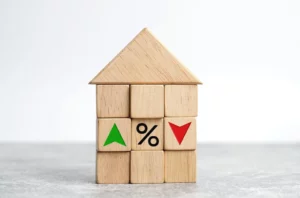Renovations breathe fresh, new life into your home. They can enhance your property’s curb appeal, improve its functionality or efficiency, and boost the overall enjoyment you get out of your home. But embarking on a renovation project requires careful consideration, especially when it comes to financing.
Taking out credit is a time-honoured way to afford renovations, both essential and cosmetic alike. Plenty of personal loans, credit cards, lines of credit, and HELOCs (Home Equity Line of Credit) exist.
But before you take this leap, let’s explore some key factors to consider. By the end of this article, a better understanding of the implications of renovating on credit will be achieved, empowering you to make an informed decision.
The Pros and Cons of Borrowing Money
First and foremost, it’s important to acknowledge that renovating on credit can have both advantages and drawbacks.
The positive side of this borrowing option is below:
- Initiating renovation projects is faster than if you had to wait until you save enough funds on your own.
- Most come with flexible repayment terms that spread out a high cost over time, so you can tackle larger projects than if you were to pay upfront.
- Some financing options use your home as collateral, which may lower your rates.
However, before committing to renovating on credit, it is essential for the potential consequences to be assessed. Here are some aspects to be considered:
- Interest and finances charged are to be applied to your loan, so the cost of borrowing is more than the out-of-pocket costs of renovating.
- Payments will be made for a long time, tying up your budget for months or years.
- Using your house as collateral means the bank could take it as payment if something prevents you from paying your debts.
5 Things to Consider Before Borrowing Money
Here is a quick list of the five things to be considered before you borrow a line of credit for your next renovation.
1. Interest Rates
When obtaining credit for your renovation, one of the most critical factors to evaluate is the interest rate. The overall cost of your project is significantly impacted by the rates you pay. It’s crucial to compare offers from different lenders to secure the best possible rate. Keep in mind that even a small difference in interest rates can lead to substantial savings over the repayment term.
2. Total Cost
Renovating on credit means that you’ll be borrowing money, which comes with a cost. It’s crucial to calculate the total cost of the renovation, including the principal amount borrowed, interest charges, and any additional fees or charges imposed by the lender. Understanding the total cost will help you determine if the project is financially feasible and aligns with your budget.
3. Impact on Credit Score
Renovating on credit means taking on additional debt, which can impact your credit score. Your credit score plays a crucial role in your ability to qualify for the best rates and terms on other loans. Any damage caused during your renovation might impact how easily you can get another loan in the future.
Your score may be damaged if you miss payments or are slow to pay down your line of credit. However, not all loans affect your credit the same way. It’s important to understand the implications to your financial standing before you sign along the dotted line to protect your financial good name.
4. Repayment Terms
Missing payments will not be an issue if you consider the repayment terms associated with your account. Evaluate factors such as the repayment period and the monthly installment amount. Make sure the repayment schedule aligns with your financial capabilities, ensuring that you can comfortably meet your repayment obligations. Failure to do so could result in financial strain and potential credit issues.
5. Return on Investment
Consider the potential return on investment (ROI) of your renovation project. While some renovations can increase the value of your home, others may not provide a significant return. According to HGTV, making changes to your kitchen, bathroom, flooring, basement, and roof promise the highest ROI.
By understanding the potential ROI, informed decisions can be made about whether it’s worth borrowing for your next project.
The Takeaway:
In conclusion, renovating on credit can be a viable option for homeowners looking to enhance their living spaces. However, it’s crucial to assess the implications before proceeding. By evaluating factors such as interest rates, total cost, repayment terms, credit score impact, and ROI, you can make an informed decision that aligns with your financial goals and circumstances.
Remember, knowledge is power when it comes to financing your renovation project. Take the time to research and compare different lending options, seek advice from financial professionals if needed, and ensure that you have a clear plan for repayment. By doing so, you can embark on your renovation journey with confidence, turning your house into the home of your dreams while maintaining financial stability.


